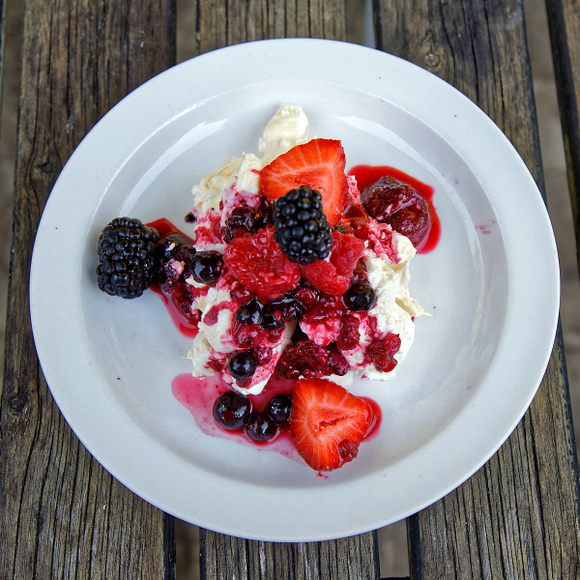Queen Victoria attended a garden party the evening before Prince George was to wed Princess May of Teck. The year was 1893, and the event spawned the first written mention of a dish called “Eton Mess aux Fraises,” recorded by historian Arthur Beavan.
Now known simply as “Eton Mess,” this easy dessert consists of broken meringue, fresh fruit (traditionally strawberries), and whipped heavy cream. Akin to other desserts popular in the region (such as Scottish cranachan or England’s knickerbocker glory), Eton Mess is hardly distinguished by its ingredient list. In a feat that can only be described as incredibly British, affiliation with royalty and the literary elite is what separates the summer parfait from its culinary cousins.
In 1440, King Henry VI founded Eton College for boys near Windsor, a little more than 20 miles west of London. Famous Brits, such as George Orwell and Aldous Huxley, received their education at the renowned establishment. Eton College’s other claim to fame is the Eton Mess, which many believe originated at the academic institution. While there’s no written evidence of the Mess prior to its appearance at the 1893 garden party, the campus grocery did sell the namesake dessert (made with strawberries or bananas served with ice cream or cream) during the 1930s. It’s now a staple at the school’s annual cricket match with Harrow College and served in honor of King George III’s birthday.
It’s unlikely that Eton College is the first place anyone ever made a mess of strawberries, cream, and meringue, but the association is so strong that the school remains a part of the sweet’s title in recipe books around the world. A mess by any other name, however, would taste just the same.
Written By
 rachelrummel
rachelrummel














